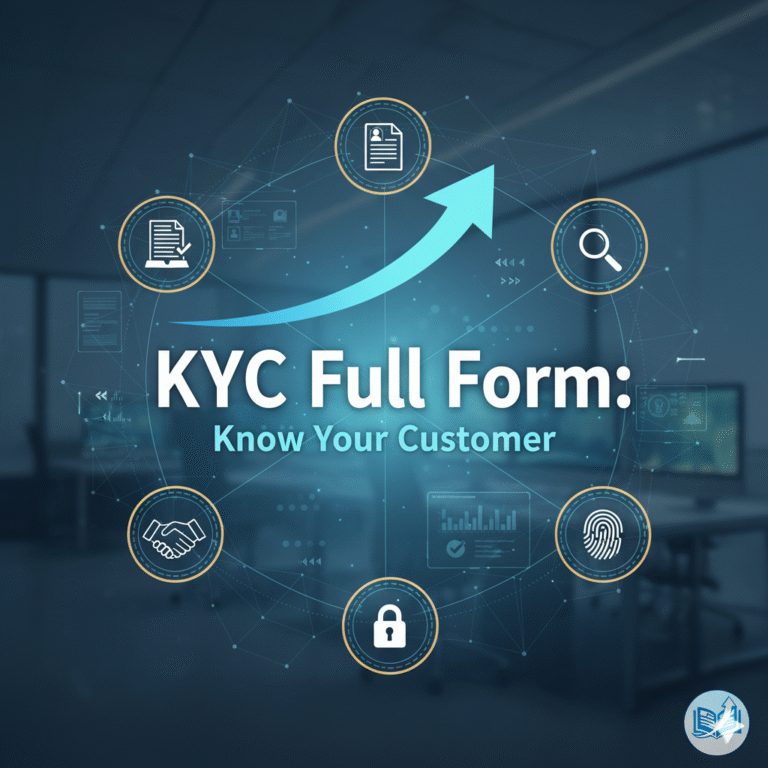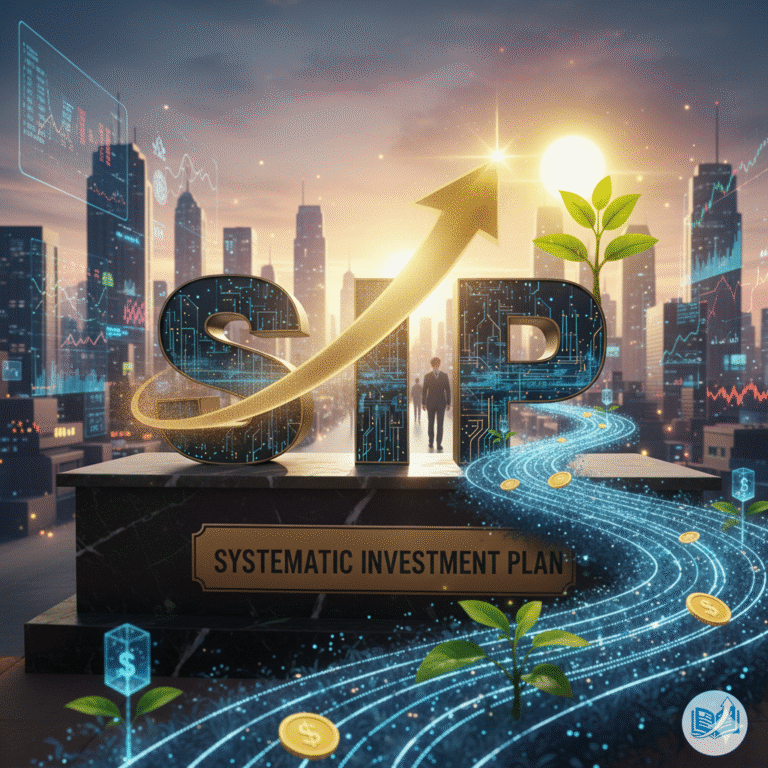GDP Full Form: Meaning, Importance, Calculation, and Global Impact
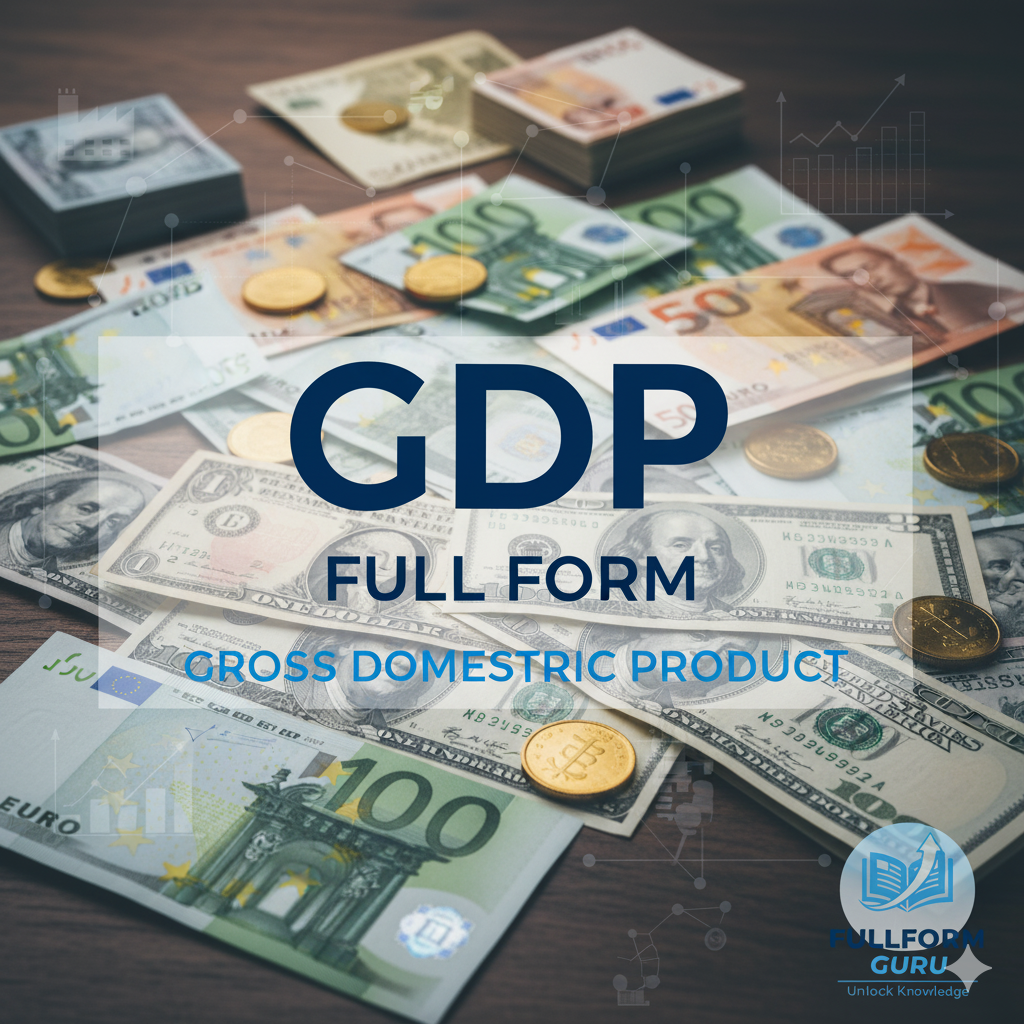
Introduction
GDP, short for Gross Domestic Product, serves as a key measure of a nation’s economic health. Understanding GDP(Gross Domestic Product) helps people analyze how a country’s economy is performing. It shows the total value of all goods and services produced within a country during a particular period. Knowing the Full Form of GDP is crucial not only for policymakers and economists but also for businesses, investors, and individuals who want to make informed financial decisions. Globally, GDP helps compare economic performance between countries, track growth trends, and evaluate living standards.
GDP Full Form and Meaning
GDP stands for Gross Domestic Product. It is a standard measure used worldwide to assess the size and performance of an economy. Gross Domestic Product (GDP) represents the complete financial value of all goods and services a nation produces over a particular period. By monitoring GDP, governments, investors, and analysts can assess economic growth, productivity, and overall prosperity. Hence, the GDP Full Form acts as a mirror that reflects the nation’s total financial activity.
Role and Importance of GDP (Why it matters)
GDP plays a crucial role in understanding an economy’s health. It helps policymakers design economic strategies, investors make informed decisions, and citizens understand the standard of living. A growing GDP indicates a thriving economy with more job opportunities and higher income levels, while a declining GDP may signal economic slowdowns or recessions.
Knowing the GDP Full Form helps policymakers and investors make beneficial decisions about the economy.
GDP Components / Stages
The GDP Full form can be estimated using three main approaches: the production, income, and expenditure methods. It is determined using various ways, each offering insights into economic activity. Here’s a simplified overview:
| Component / Approach | Description |
| Production (Output) Approach | It shows the total value of all goods and services a country produces. |
| Income Approach | Adds up all incomes earned in the economy (wages, profits). |
| Expenditure Approach | Sums all spending on final goods and services (C + I + G + NX). |
This mini-table helps readers quickly understand the main ways GDP is analyzed.
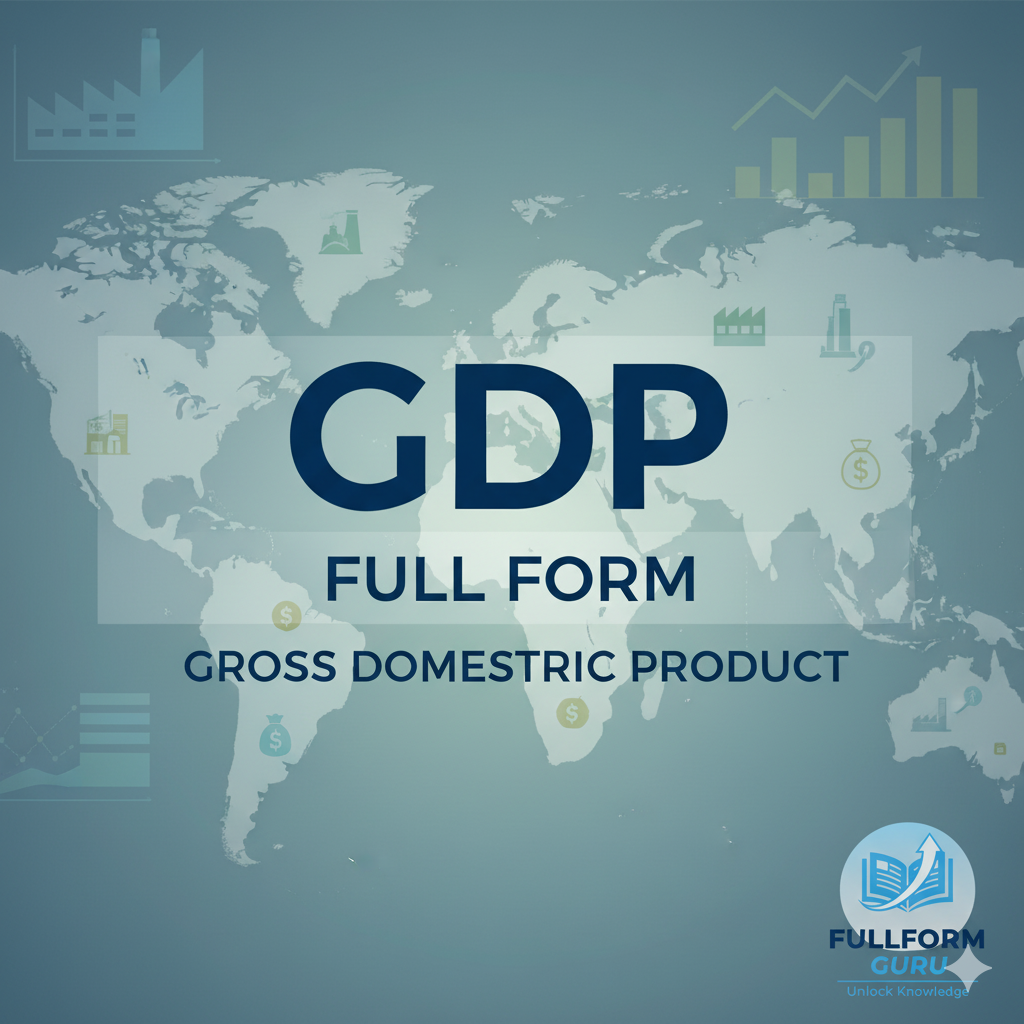
Eligibility & Basic Requirements
To measure GDP precisely, countries require reliable economic data. It requires:
- National Accounts System: A structured framework to collect data on production, income, and expenditure.
- Accurate Reporting: Businesses, government agencies, and households must provide truthful information.
- Regular Updates: Data must be collected periodically (quarterly or annually) to track economic trends.
These factors ensure that the GDP calculation is accurate and reflects national performance.
Syllabus Overview & How GDP Works (Step-by-Step)
GDP measures a nation’s total economic output over a specific period. By understanding the GDP Full Form, students can learn how economic activity is measured step by step:
- Production Approach: Add the value of all goods and services produced.
- Income Approach: Sum all incomes earned by individuals and businesses (wages, profits, rent).
- Expenditure Approach: Total all spending on goods and services, including consumption, investment, government spending, and net exports (exports minus imports).
For example, if a country produces $500 in goods and $200 in services, its GDP would be calculated by combining both using the chosen method to represent total economic activity.
Preparation Strategy for Understanding GDP
To effectively understand and analyze GDP data, follow these practical steps:
- Read Economic Reports Daily: Spend 15–20 minutes reviewing global economic updates.
- Track Key Indicators: Monitor inflation, unemployment, and industrial production for context.
- Use Reliable Sources: Refer to global institutions like the IMF, World Bank, or central banks.
- Practice Calculations: Try computing GDP using production, income, and expenditure methods on sample data.
- Visualize Trends: Use charts and graphs to spot growth patterns and sector contributions.
These steps help readers develop a clear understanding of GDP beyond just numbers. Following these steps helps anyone grasp the concept of GDP more effectively.
Career Opportunities After Understanding GDP
A strong understanding of the GDP Full Form opens multiple career opportunities in economics and finance. Key opportunities include:
- Economist – Analyze economic trends and advise governments or organizations.
- Financial Analyst – Use GDP data to guide investment decisions and market strategies.
- Policy Analyst – Assess economic policies and their impact on national or global growth.
- Researcher – Conduct academic or industry research on economic development.
- Consultant – Advise businesses or institutions using macroeconomic insights.
Understanding GDP equips professionals to make informed decisions and contribute meaningFully to economic growth.
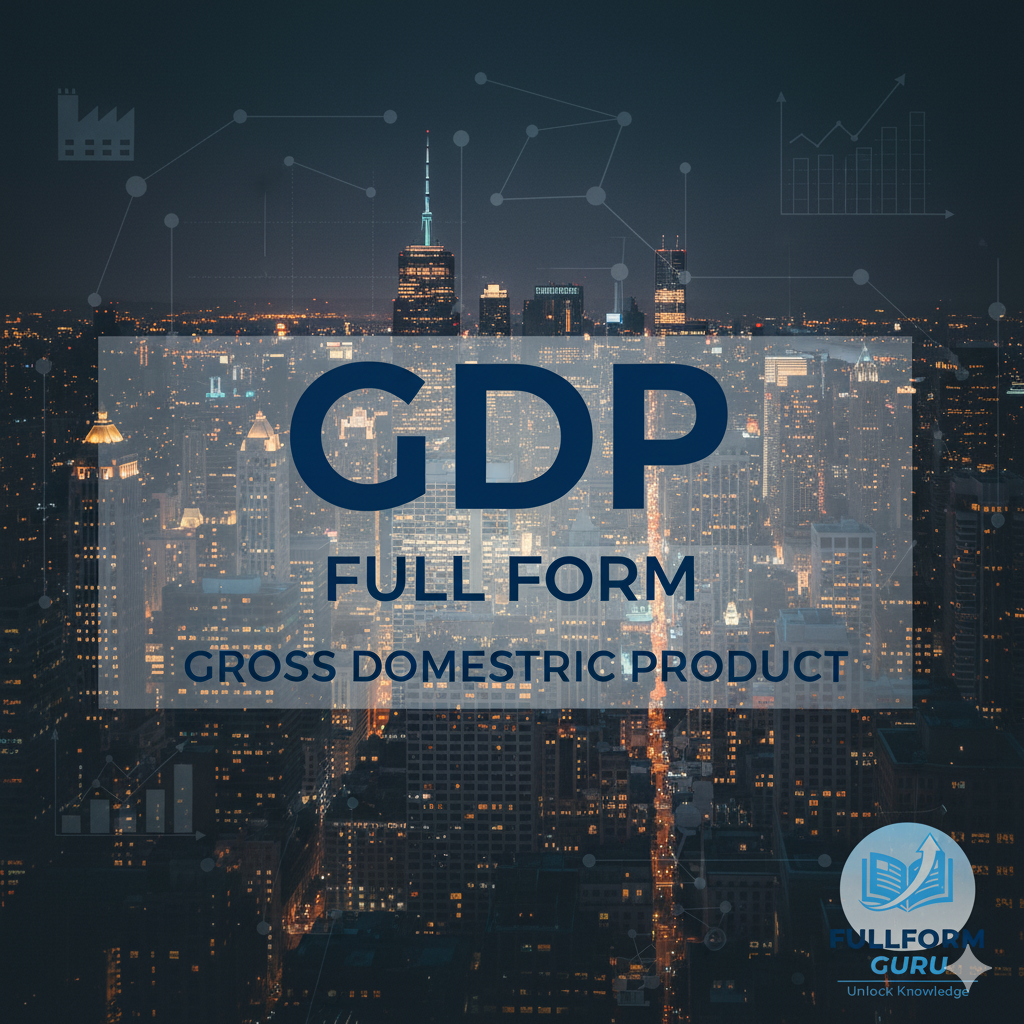
Comparison with Other Economic Indicators
Before comparing, it’s essential to understand what the GDP Full Form truly represents.
| Indicator | Focus | Use | Difference from GDP |
| GDP | Total economic output | Measures overall economic growth | Broadest measure of economic activity |
| GNP | Total national income | Includes income from abroad | Focuses on residents’ earnings, not domestic production |
| CPI (Consumer Price Index) | Inflation | Tracks the cost of living | Measures price changes, not total output |
| Unemployment Rate | Labor market health | Evaluates employment levels | Shows workforce engagement, not economic size |
This table allows readers to easily see the differences between GDP and other frequently used economic indicators.
How to Get Started — Practical Steps
To understand and track GDP effectively, follow these actionable steps:
- Start reading reliable economic reports and news daily (10–15 minutes).
- Learn basic economic terms like GDP, GNP, inflation, and per capita income.
- Refer to global databases, such as the World Bank or the IMF, to access unbiased and up-to-date statistics.
- Track quarterly GDP reports of different countries to examine trends and comparisons.
- Apply basic calculations: try estimating GDP using the expenditure approach (Consumption + Investment + Government Spending + Net Exports).
These practical steps will help anyone, from students to business professionals, understand the real-world impact of GDP.
Common Mistakes / Myths to Avoid
When learning about GDP, people often make these errors:
- Confusing GDP with income per person: GDP is total production, not the income of each individual.
- Ignoring inflation: Comparing GDP across years without adjusting for inflation can be misleading.
- Assuming GDP measures well-being: A higher GDP does not always lead to better living standards.
- Mixing nominal and real GDP: Nominal GDP uses current prices, while real GDP adjusts for inflation.
- Overlooking the informal economy: GDP may not capture informal or unreported economic activities, causing underestimation.
Being aware of these mistakes ensures a more accurate understanding of economic performance.
Conclusion
In conclusion, GDP (Gross Domestic Product) is a key economic indicator that reflects the total value of goods and services produced within a country over a specific period. By understanding GDP, you empower yourself to connect with the bigger picture of global progress. GDP is not just a number; it represents the overall economic health of a nation, the standard of living, and potential areas for growth across different sectors.
By studying GDP trends, individuals can assess economic stability. Knowledge of GDP also enables students, entrepreneurs, and professionals to compare economies globally and understand how policies, technological advancements, and trade impact growth. It emphasizes the importance of sustainable development and responsible economic practices in maintaining long-term progress.
Staying informed about GDP fluctuations empowers you to make helpful financial and career decisions, plan budgets effectively, and contribute meaningFully to discussions on economic policies. By tracking economic trends and understanding the factors that drive growth, you can take control of your financial knowledge and be better prepared to navigate the global economy successFully. Hence, knowing the GDP Full Form empowers individuals to connect with the bigger picture of economic growth.






